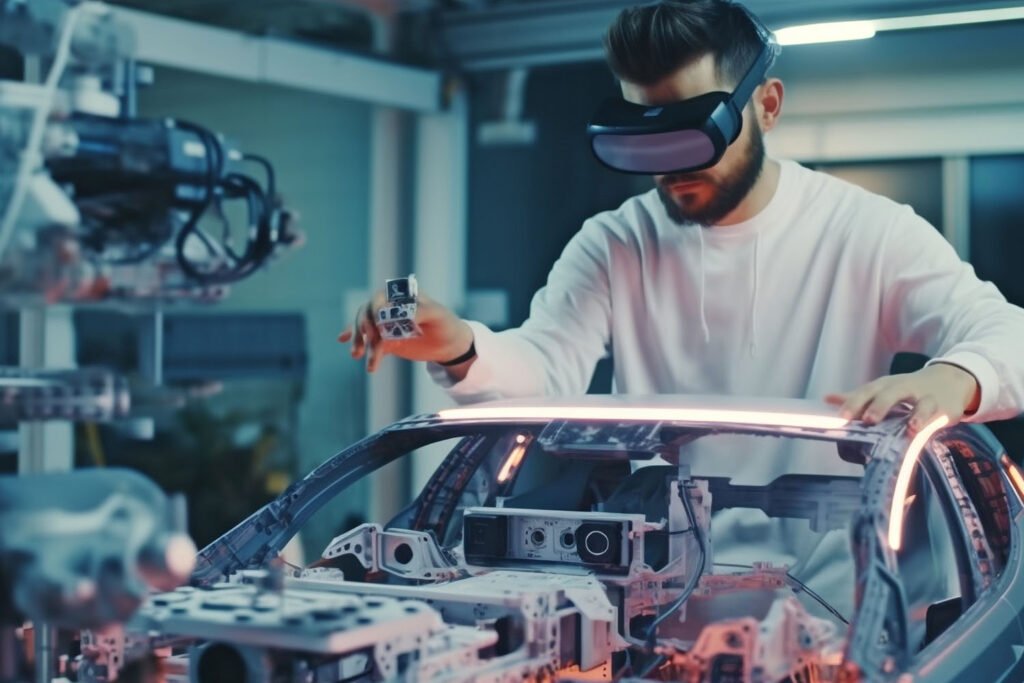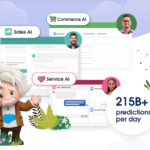
Overview of the Automotive Industry
Because of shifting customer expectations, technical improvements, and environmental concerns, the automobile industry is changing faster than many others. Developments in the automotive sector include linked automobiles, autonomous driving, and electric vehicles. Still obstacles abound: supply chain disruptions, regulatory issues, and increasing global competition. These struggles and more need to be overcome. Innovation has always been at the heart of the automobile business. From the creation of the assembly line to electric vehicles and recently 400-horsepower water engines, the automotive industry has innovated not only for itself but for all types of manufacturing. The industry is constantly changing to keep up with shifting customer wants and technical breakthroughs, from the manufacturing line to electric automobiles.
Empowering the Automotive Industry
EMEA Region
Mordor Intelligence is projecting the Middle East will see massive year-over-year growth in sales over the next five years. “The Middle East and Africa Automotive Electric Vehicle Market size is estimated at USD 3.33 billion in 2024, and is expected to reach USD 9.42 billion by 2029, growing at a CAGR of 23.20% during the forecast period (2024-2029).” 3 In Sub-Saharan Africa, Mordor points to the region’s need for alternatives to fuel dependency. “Sub-Saharan African (SSA) countries are in urgent need of alternative energy sources for transport to stave off the growing burden of fuel dependency and subsidies, as well as an electricity storage solution to leverage their abundant renewable energy resources. Electric vehicles (EVs), powered by electricity and running on battery storage, offer a potential solution to both of these problems. Many SSA countries are expected to make large power capacity investments in the next decade.” Ibid
EV Sales
This may represent a normalising of EV sales, as opposed to an actual slowing. As EV’s become simply part of the overall automotive market, as opposed to a novelty, they will become part of the complete sales package. As time goes on, the vast majority of observers expect EVs to dominate the market and eventually supplant almost all fossil fuel powered vehicles. One space where the automotive industry is experiencing massive change in online auto sales. During the COVID-19 pandemic, many online auto sales sites saw massive increases in sales because auto showrooms were closed. The trend of buying vehicles online is continuing to grow as consumers seek the convenience and much larger inventories of online sales sites versus the limited options at local dealerships. High interest rates continue to impact auto sales as those rates make vehicles more expensive for borrowers. The global trend to higher interest rates is likely to continue for the foreseeable future.
Allianz offers
Allianz offers an insightful overview: “We expect new auto sales to grow by +1.9% this year due to subdued consumer spending – especially in China and Europe – and sub-par global economic growth. EVs remain in a relative sweet spot despite major headwinds. We forecast the sale of new EV passenger cars to exceed 18mn (+32.8% y/y) in 2024, with Europe leading the way (+41.2%).”1 Their report shows they expect to see shrinking margins and an increase in the percentage of research and development that will be allocated in the manufacturers’ budgets. Forbes, in their article, “Global Automotive Market: Predictions For 2024”, points out that EV sales will slow, but not stall.

Experience The Keonos Advantage In Automotive
At Rutford, we assist our clients with Salesforce, Tableau, Mulesoft, and Slack. These apps are 100% integrated and combined with all of the company’s apps to deliver massive data right where and when it’s needed.
Challenges to the Automotive Industry
The automotive industry is one of the most important to the global economy representing the second largest investment most people will make in their lives, behind their homes.
With foreign competition, high interest rates, and a move to EV vehicles, the industry is facing new challenges that will require innovative solutions.
Below find some of the most significant challenges the industry faces, as well as some solutions that might be applied to them.
1. Customer Experience
Challenge: The customer experience
will be increasingly important at
every level of the industry. Where
manufacturers used to rely on
dealers to follow up with customers,
they will need to start doing so
robustly in the future. Dealers will
have to turn a casual contact into a
personalised experience for every
customer to remain competitive.
Solution: Customer relationship
management (CRM) software offers the
tools that businesses at every level
of the industry need to survive and
thrive. From automated messages to
personalised notes and records, CRM
programs make it easy for a company
to keep track of every customer
interaction, message, and more. For
manufacturers and dealers, a broad
infrastructure that shares
information between companies will
give the customer the feeling of
being part of one big family instead
of disparate entities, each seeking
to make an impression.
2. Supply Chain Visibility
Challenge: The COVID-19 pandemic
revealed massive weaknesses in the
supply chain. Just-in-time stock,
long supply chains, and lack of
transparency literally closed
factories that would otherwise have
been building and selling cars. The
ripple effect put dealers out of
business and shuttered tiers I, II,
and III suppliers.
Solution: The key to maintaining a
healthy supply chain is to make it
as transparent as possible. Data
from every shipment, every order,
and every item will give the supply
team the ability to see clearly
what’s happening, where the supply
chain is struggling, and offer them
the opportunity to break the clogs
and reopen the chain. This requires
real-time data and systems
integration on a scale that’s new to
industry. Everything, from a small
screw to the largest auto body needs
to be tracked and a simple,
integrated chain visualisation
system needs to alert interested
parties to the problems.
3. Sales Performance Analysis
Challenge: Understanding where a
sales system is failing or
succeeding is the key to growing
what works and eliminating the weak
points. This is done by having a
system in place that delivers a
complete view of the sales funnels
instantly.
Solution: The sales funnel is more
than just the CRM and contacts. It’s
also the supply chain, the
warehouse, the delivery system, and
more. It’s about making sure that
messages are coordinated between
manufacturers, dealers, support
companies, and more. The goal is to
provide a single front to the client
to allow them to move smoothly from
prospect to owner to cheerleader.
4. Digital innovation
Challenge: Cars today seem to be as
complex as a space shuttle. They
have dozens of onboard computers,
are connected to the internet, and
provide gigabytes of data to their
systems. New innovations are coming
online every day.
Solution : Keeping track of
innovations, from the research and
development stage to delivery to the
customer to follow through, requires
a robust data gathering system that
looks at the vehicle process as a
whole, not siloed parts. This type
of system can provide powerful
insights if the data is delivered in
real-time and can be visualised
easily. Using the right
back-of-house, customer management,
and front-of-house systems can make
all the difference. The key to
success with those systems, though,
is perfect integration that allows
the free flow of data from one to
the other.
Summary of the Automotive Industry
2024 and Beyond
The automotive industry will see regional struggles and triumphs. In the EMEA region, Europe will struggle while the Middle East continues to grow. Africa will look for a transition away from dependence on imported oil to a power system that can be generated at home. The solutions to the industry’s challenges are similar in nearly every case: the right software solutions that are properly integrated. The integration is the key. A Salesforce 2023 report across multiple industries discovered that most firms have over 1,000 applications, applications that work very well, but that 70% of those apps were not connected. All of the data from these apps is being hidden from the rest of the systems. This makes company-wide data unavailable to leadership. Without that data, company leadership can’t make fully informed decisions.







